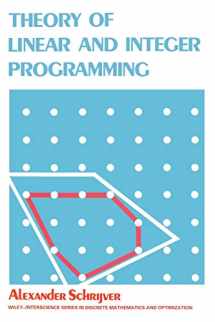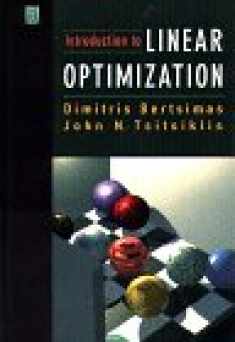
Theory of Linear and Integer Programming
Book details
Summary
Description
Theory of Linear and Integer Programming Alexander Schrijver Centrum voor Wiskunde en Informatica, Amsterdam, The Netherlands This book describes the theory of linear and integer programming and surveys the algorithms for linear and integer programming problems, focusing on complexity analysis. It aims at complementing the more practically oriented books in this field. A special feature is the author's coverage of important recent developments in linear and integer programming. Applications to combinatorial optimization are given, and the author also includes extensive historical surveys and bibliographies. The book is intended for graduate students and researchers in operations research, mathematics and computer science. It will also be of interest to mathematical historians. Contents 1 Introduction and preliminaries; 2 Problems, algorithms, and complexity; 3 Linear algebra and complexity; 4 Theory of lattices and linear diophantine equations; 5 Algorithms for linear diophantine equations; 6 Diophantine approximation and basis reduction; 7 Fundamental concepts and results on polyhedra, linear inequalities, and linear programming; 8 The structure of polyhedra; 9 Polarity, and blocking and anti-blocking polyhedra; 10 Sizes and the theoretical complexity of linear inequalities and linear programming; 11 The simplex method; 12 Primal-dual, elimination, and relaxation methods; 13 Khachiyan's method for linear programming; 14 The ellipsoid method for polyhedra more generally; 15 Further polynomiality results in linear programming; 16 Introduction to integer linear programming; 17 Estimates in integer linear programming; 18 The complexity of integer linear programming; 19 Totally unimodular matrices: fundamental properties and examples; 20 Recognizing total unimodularity; 21 Further theory related to total unimodularity; 22 Integral polyhedra and total dual integrality; 23 Cutting planes; 24 Further methods in integer linear programming; Historical and further notes on integer linear programming; References; Notation index; Author index; Subject index


We would LOVE it if you could help us and other readers by reviewing the book
Book review





